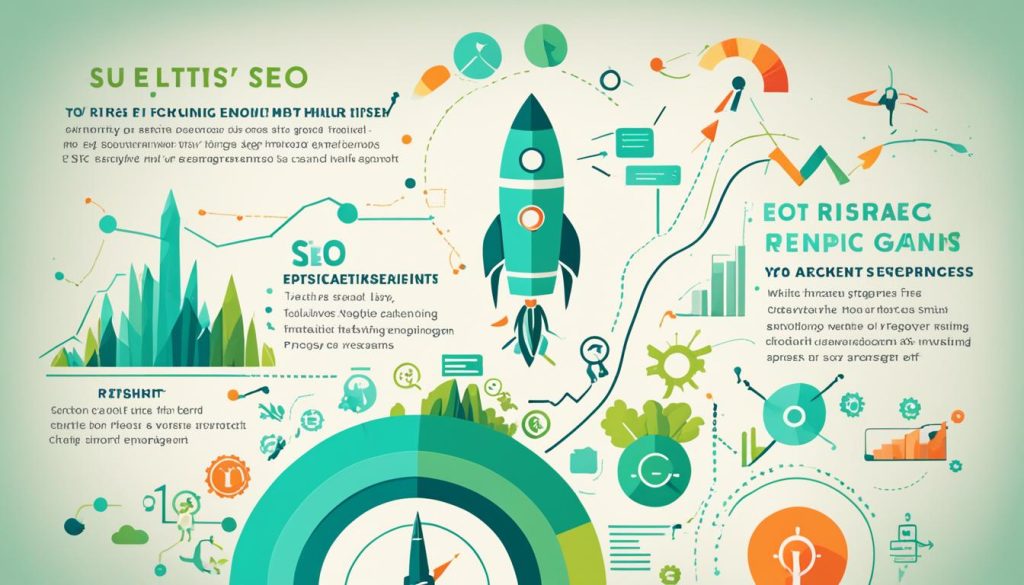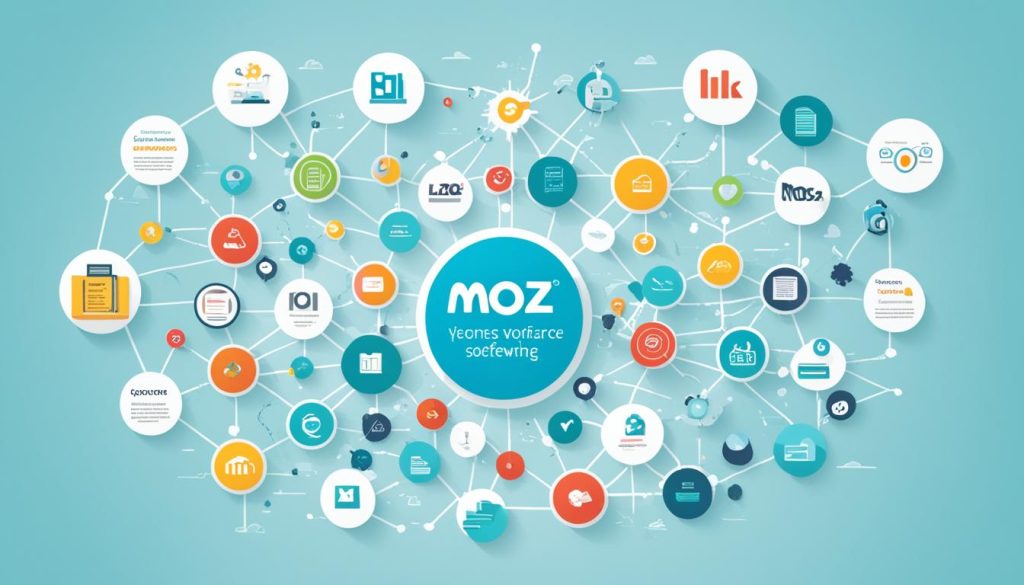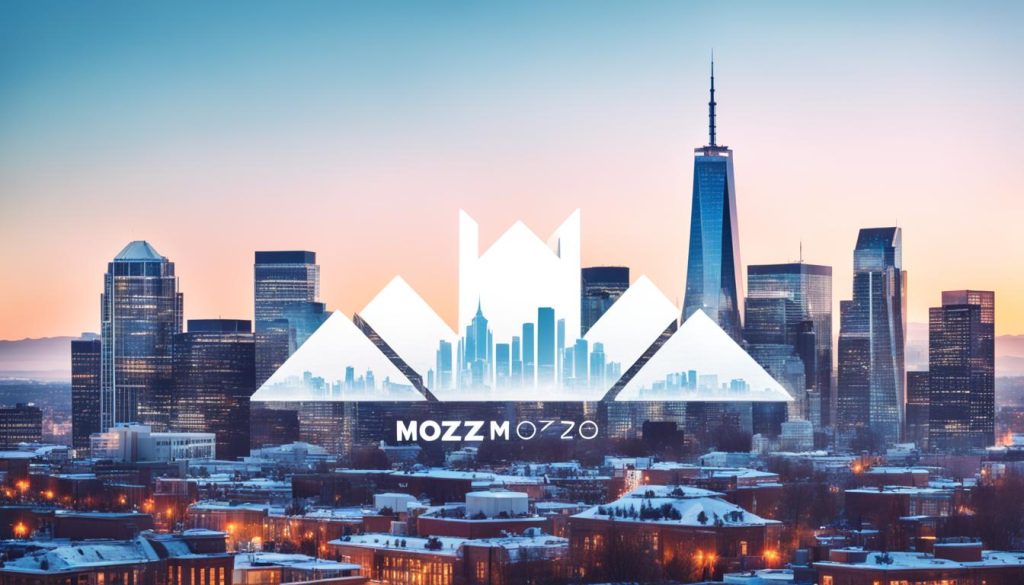17 years ago, Rand Fishkin started SEOMoz (later Moz) with a big dream. He saw the SEO industry beginning in the early 2000s. Then, he realized there wasn’t enough online help for SEO. So, in 2004, he began his SEO expert blogging journey with the SEOmoz blog. This blog soon became a vital resource for others like him who wanted to learn and improve.
Fishkin’s blog became very popular. This success led to his SEO consulting business. Eventually, that business evolved into Moz, the big software company it is today. Even though making money was hard at first, the blog attracted a steady flow of new clients. This not only sustained their growth but also helped Fishkin clarify the focus and vision for his company. Today, Moz is a leading software and SEO platform with a big team of 155 people and an impressive revenue of over $40 million every year. All this success, Fishkin believes, was driven by his blogging strategies and his commitment to using content for marketing and sharing valuable insights through his blogging efforts.
From Humble Beginnings to SEO Empire
Rand Fishkin didn’t have an easy start in business. He tried to get his web design clients to rank on Google but he wasn’t very successful. This made him turn to others for help with search engine optimization (SEO).
Fishkin wanted to do SEO work himself. Doing web design, he got deeply into online forums to learn about SEO. In 2004, this push led him to start the SEOmoz blog because he couldn’t find enough SEO knowledge online.
The SEOmoz blog was a struggle at first, jumping from project to project. But, it started growing and getting more clients. This growth helped Fishkin shape his company’s direction. And so, Moz’s software business was born from these efforts.
| Key Milestones in Moz’s Growth | Timeline | Impact |
|---|---|---|
| Rand Fishkin launches SEOmoz blog | 2004 | Establishes Fishkin as an SEO authority and brings in a steady flow of clients for the company’s consulting services |
| SEOmoz secures $1.1 million Series A funding | 2007 | Fuels Moz’s growth and expansion as the company transitions from a blog to a software business |
| Moz ranked #334 on the Inc. 500 list | 2010 | Highlights Moz’s rapid growth and transformation into an industry-leading SEO software provider |
| Moz secures $18 million Series B funding | 2012 | Further accelerates Moz’s development and solidifies its position as a leading provider of SEO tools and services |
Rand Fishkin’s early challenges, his hard work, and SEO insights marked Moz’s beginnings. His struggle in the SEO world formed the basis for its later success. The lessons from those early times have shaped Moz into the SEO giant it is today.
Rand Fishkin’s Early Days in Web Design
In the early 2000s, Rand Fishkin learned the power of organic search. He wanted to help his web design clients be seen on search engines. But, he struggled to get his clients’ sites to show up on Google’s first page. This was a big step for them as being at the top of search results was key.
Struggling to Rank on Google
Fishkin wasn’t happy with not getting his clients’ websites to rank on Google. He then tried using outside help, like local SEO companies, to boost their rankings. But as the search for good SEO help increased and prices went up, he chose to take SEO work in-house. This was a switch from his earlier focus on crafting beautiful and functional sites.
Turning to SEO Forums for Knowledge
To learn more, Fishkin started hanging out on SEO forums, asking and answering questions. Over time, he became a go-to expert in SEO. With a lot of info and analysis, Fishkin found himself needing a bigger platform.
This need sparked the launch of the SEOmoz blog in November 2004. It was his way of sharing vast SEO knowledge and expertise with the SEO industry.
The Birth of SEOmoz Blog
In November 2004, Rand Fishkin started the SEOmoz blog. He did it because he was really frustrated. The world of SEO was opaque, full of secrets with not much info online. This was especially true in the early 2000s. His frustration grew when he couldn’t make his web design clients rank on search engines.
Fishkin looked for help in online forums. But, he found the SEO knowledge there was not enough and even confusing.
Frustration with Lack of SEO Knowledge
The start for the SEOmoz blog was tough. They were trying to make money. Fishkin and his team moved from one consulting project to the next. Yet, the blog started getting noticed by clients. This gave Fishkin the chance to better define his company’s goals and messages.
Sharing Relevant and High-Quality Content
Fishkin made the SEOmoz blog known by sharing top-notch content regularly. This made him stand out in the SEO field as an expert. His blog was the first step towards starting the SEOmoz consulting business.
Today, that business is the Moz software company. Moz has more than 155 employees and makes $40 million in revenue each year.

Blogging Success Story of Rand Fishkin
Rand Fishkin made a big choice in 2004 to start the SEOmoz blog. At first, things were tough making the blog profitable. But, soon it began to get more attention, leading clients to Fishkin’s SEO consulting services.
Building an SEO Consulting Business
The SEOmoz blog started to get noticed, making Fishkin respected in the field. He used this to clarify his company’s goals. The blog was the starting point for the SEOmoz consulting business. Later, this grew into the Moz software company.
Refining Vision and Focus
Fishkin built the SEO consulting business by posting great content on the SEOmoz blog regularly. Thanks to this, he could really focus the company’s plans and messages. This helped Moz quickly become a key figure in search engine optimization software.
Venture Capital Investment and Growth
In September 2007, Moz got a big boost. It received a $1.1 million in a Series A funding round. Ignition Partners and Curious Office backed Moz at this stage. This Moz’s venture capital funding was key to its quick Moz’s rapid growth. It helped Moz grow, do more, and become the best in SEO software.
$1.1 Million Series A Funding
The Series A round was a turning point for Moz. It gave Moz the resources it needed to speed up development. It also helped Moz become a top choice for SEO tools and services. Moz used this money to make better products, bring in new talents, and grow stronger. This strengthened its place in the market.
Ranked on Inc. 500 List
In September 2010, Moz’s success grabbed attention. It made the Inc. 500 list at spot #334. This ranking showed how far Moz had come. Moz had transitioned from a difficult start to a major player. It was a sign of Moz’s resilience and its growing impact in the SEO world.
After the Series A funding, Moz kept expanding. It grew to include over 155 workers. Then, in May 2012, the Foundry Group led a big Series B round of $18 million. This new investment sped up Moz’s growth. It made Moz even stronger in the world of SEO software.

Moz’s Meteoric Rise
From the start as the SEOmoz blog, Moz has grown a lot. It went from that small blog to a big software company. It now has over 155 workers and is expected to make over $40 million in 2016. Moz’s journey to the top came from its three main products – Moz Pro, Moz Local, and the Moz API.
These products helped Moz become a leader in its field. They attracted over 23,000 Moz Pro users and 14,000 Moz Local accounts by 2016.
Today, the Moz website gets almost 3 million visitors each month. This shows its strong position in the SEO world. The hard work of Rand Fishkin in creating quality content and tools has been essential to Moz’s success. It took two decades of dedication to reach where they are now.
| Key Statistics | Value |
|---|---|
| Google’s Desktop Search Market Share (Q1 2016) | 89.44% |
| Moz Employees | Over 155 |
| Monthly Visitors to Moz.com | Nearly 3 million |
| Moz Pro Customers | Over 23,000 |
| Moz Local Accounts | Over 14,000 |
| Projected Moz Revenue (2016) | Over $40 million |
Fishkin’s Humble Attitude Towards Success
Even as Moz grew into a renowned success, Rand Fishkin remained modest. Though he no longer leads as CEO, the responsibility for Moz’s direction is close to his heart. This concern is for both investors and team members.
Fishkin is cautious in calling Moz a success. The firm has received venture capital funding, which requires it to yield high returns. Fishkin understands the challenge but stays focused on enriching the SEO industry. His dedication and modest demeanor have played a major part in Moz’s evolution from a humble blog to a top software company.
Rand Fishkin’s Top SEO Tips
Rand Fishkin of Moz knows a lot about SEO. He says it’s vital to learn from pros before you start. Fishkin warns that SEO is tricky and making mistakes without knowing can be expensive.
Understand Search Engine Penalties
Fishkin also talks about understanding search engine penalties. He warns new SEO folks might do things that Google doesn’t like. To avoid getting penalized, learn what’s good and what’s not in SEO.
Focus on User Experience
Lastly, Fishkin says prioritizing user experience is key. He thinks making top-notch content that users love is better than trying to beat the system for quick wins. Following his advice has made Moz very successful, with a large team and high earnings in 2016.

Moz’s Software Products and Services
Moz’s main software includes Moz Pro, Moz Local, and the Moz API. Moz Pro is a tool for professional SEOs. It has tools like Keyword Explorer and Open Site Explorer. Then, there’s Moz Local, designed to help local businesses manage their online profiles. Finally, the Moz API allows programmatic access to Moz’s data. Moz’s software has led to its rapid growth. In 2016, they had over 23,000 Moz Pro customers and 14,000 Moz Local accounts. Providing valuable tools and data for SEO professionals has helped Moz succeed.
Besides their software, Moz offers SEO consulting, training, and resources. This variety of services makes Moz a top choice for comprehensive SEO solutions.

Embracing Transparency and Authenticity
Rand Fishkin and Moz are well-known for their honesty and being real. When Fishkin left his CEO job, he shared his feelings in a heartfelt blog post. He didn’t leave just to get rich or famous. He cared about being true to who he is.
Fishkin always aimed to help the SEO community, not just himself. This approach earned Moz trust and loyalty. Moz is open about its struggles and what it learns. This openness makes Moz different in an industry known for keeping secrets.
Fishkin’s real leadership and Moz’s clear way of doing things helped them grow. They care more about their community than quick wins. Because of this, Moz is a brand that people trust. Both SEO pros and digital marketers like what Moz does.

Challenges and Lessons Learned
The SEOmoz blog faced big challenges at the start. They couldn’t figure out how to make steady money. Rand Fishkin led the way but felt lost, jumping from one project to another. Moz’s early struggles reflected the typical startup’s challenge of finding their path.
Overcoming Early Struggles
Despite the rocky start, Fishkin kept pushing and shared top-notch content on the SEOmoz blog. This made him a respected figure in the SEO world and brought clients to the firm. Lessons from Moz’s start showed how sticking through hard times can bring success.
Importance of Persistence
The tough times at Moz became vital lessons. These helped Moz turn into a top software company. Fishkin talked a lot about the need to persist in business, which played a big role in Moz’s journey. They went from their small start to a major player in SEO software.
Rand Fishkin’s Future Endeavors
After leaving his role as CEO of Moz, Rand Fishkin is starting new ventures. One is SparkToro, a software company focusing on influencer and audience intelligence. It took almost 2 years to get SparkToro off the ground, but it’s now profitable and growing.
He’s also writing a book called “Lost and Founder: A Painfully Honest Field Guide to the Startup World.” This book shares his Moz experiences to help other entrepreneurs. Rand remains connected through Moz’s board, big owner stakes, and support for its growth.
In 2019, Moz’s potential sale at $90 million was overshadowed by its $52 million revenue. Despite this, Fishkin and his wife would have made over $14 million from the deal that didn’t happen. He left Moz’s board in 2020 but kept roughly 20% in the company amidst a possible 2021 Moz sale, which is still uncertain.

